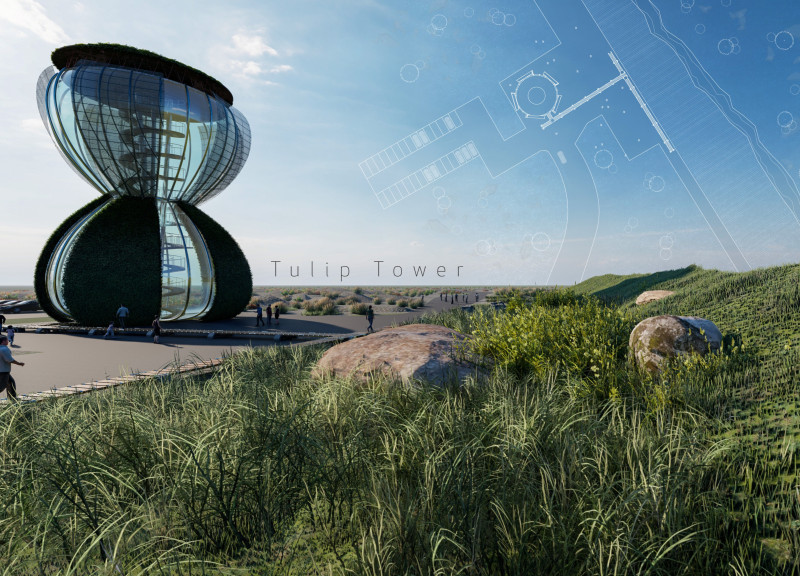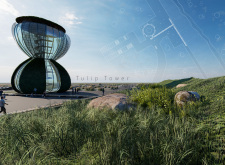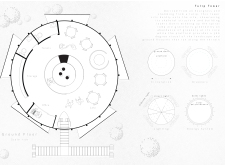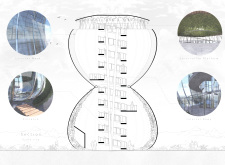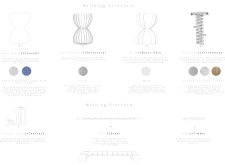5 key facts about this project
Tulip Tower presents a blend of natural inspiration and functional design, located strategically to interact with its landscape. Shaped by the forms of an hourglass and a tulip, the tower invites exploration through its vertical elements and lush interiors. Occupants can experience nature firsthand as they ascend through a space defined by greenery and thoughtful pathways, promoting a connection to the environment.
Concept and Form
The design of Tulip Tower revolves around a prominent skeletal structure that rises from the ground. This verticality emphasizes accessibility, guiding visitors along a spiraling ramp that carries them upward amidst abundant plant life. Integrating nature into the structure enhances its visual presence. The design fosters an inviting atmosphere, allowing individuals to experience a sense of calm as they move through the building.
Sustainability and User Engagement
An essential aspect of Tulip Tower is the 360-degree viewing platform at the top. Here, visitors can appreciate the surrounding landscape from a unique vantage point. This area serves not just for observation but as a space for contemplation, allowing for an engaged experience with the geography of the site. The greenery at the tower's core further emphasizes sustainability, creating a biophilic environment that connects users with nature.
Materiality and Structure
Materials play a crucial role in the team’s design choices. Steel is used for the skeletal framework, providing the necessary durability and flexibility for the tower’s design. Polycarbonate elements allow natural light to pour into the space while also contributing to energy efficiency with a solar layer. The outer layer, made of mesh, effectively controls light entry. It supports the internal greenery, promoting a cooling effect throughout the building.
Spatial Configuration
The tower's design incorporates precast concrete legs for stability while limiting disruption to the natural surroundings. This detail maintains a connection to the land. The arrangement of space within the structure encourages occupants to explore and engage with both the architecture and the natural elements present. As visitors ascend, they are surrounded by a mixture of flowing forms and lush plant life, creating an environment that reflects a strong bond between the built and natural worlds.


